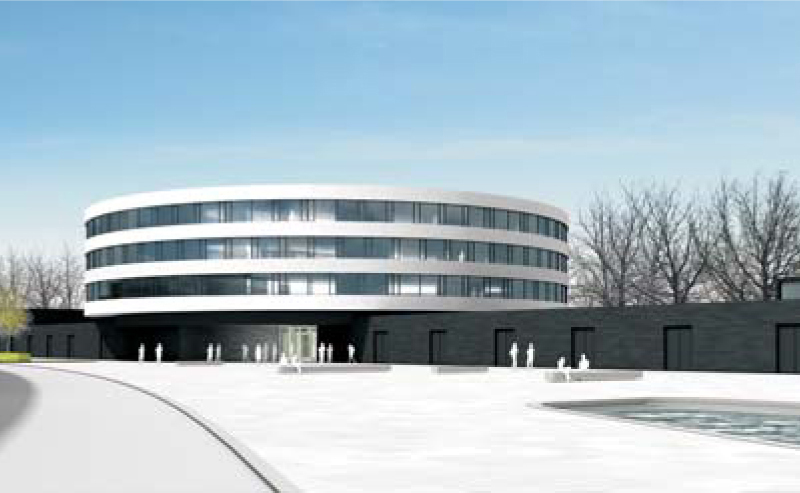German center takes new collaborative form for FEL science
DOI: 10.1063/1.3156328
Exploiting free-electron lasers—and other instruments—to study matter on ultrashort timescales is the aim of the new Centre for Free-Electron Laser Science (CFEL). As a three-way partnership among the Max Planck Society (MPG), the German Electron Synchrotron (DESY), and the University of Hamburg, CFEL is unusual in Germany, says solid-state physicist Wilfried Wurth, the university’s representative on the center’s management board. “We think it’s great because it brings university researchers and students together with the research-focused Max Planck Society and the resources of the big-scale facilities at DESY.”
A new ₠49 million ($65 million) building—paid for by the city of Hamburg—is being erected for CFEL a stone’s throw from both DESY’s FLASH, a soft x-ray source in operation since 2005, and the European XFEL, an international facility scheduled to go on line in 2015. But, says CFEL board chair Joachim Ullrich of the Max Planck Institute for Nuclear Physics in Heidelberg, “CFEL is equally involved in the use of other sources worldwide,” such as the Linac Coherent Light Source at Stanford University, the SPring-8-based SCSS in Japan, and FERMI (Free Electron Laser for Multidisciplinary Investigations) in Trieste. “The mission of CFEL,” adds Andrea Cavalleri, who heads the center’s MPG group in structural dynamics, “is to explore the time evolution of structure in matter of all kinds—in the solid state, in plasmas, in biological systems, but also in chemical systems and in small quantum systems, where electronic changes down to the attosecond timescale shall be explored.”
CFEL is building up five research groups, two funded mostly by the MPG with a share by the university and three by DESY; together the groups will have around 150 scientists. The MPG and the university also each have groups that act as portals for, respectively, scientists from any Max Planck institute and from anywhere within the University of Hamburg to gain access to free-electron lasers. Pending international recognition of the potential of this new area of science, says Ullrich, the Max Planck portion of CFEL is intended to grow into a self-standing Max Planck institute.
The participation of DESY in CFEL also breaks new ground. Traditionally, says DESY’s Edgar Weckert, “most of the scientists in our place spent two-thirds of their time supporting users or constructing experiments and one-third of their time for their own research. It was recognized that you spent so much time getting new machines like FLASH and XFEL set up, DESY scientists wanted to have their own scientific visibility.”

Artist’s conception of the building for the Centre of Free-Electron Laser Science in Hamburg, Germany.
HAMMESKRAUSE ARCHITEKTEN

More about the Authors
Toni Feder. tfeder@aip.org
